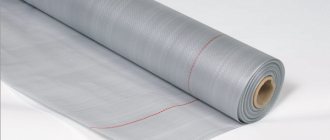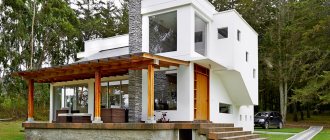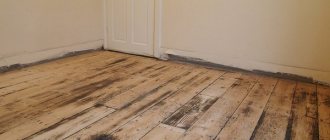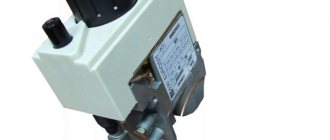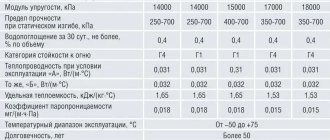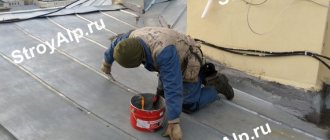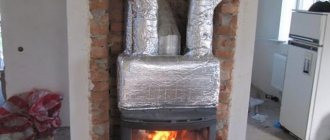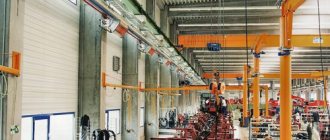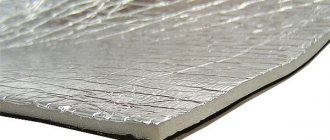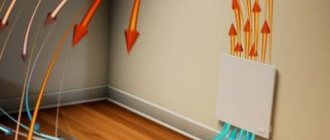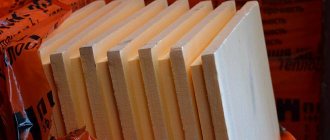The roof structure is a complex system. It consists of several layers of dissimilar materials, each of which performs its own unique function.
To ensure comprehensive protection of the building from environmental influences, it is necessary to carry out all installation work with high quality, as well as the correct choice of basic and insulating materials. This whole process is briefly called roof insulation.
The standard composition of the roofing cake includes:
- Internal finishing layer;
- Lathing design;
- Vapor barrier material;
- Counter-breach;
- Thermal insulation (does not apply to a cold attic);
- Waterproofing layer (read about chimney waterproofing here);
- Ventilation shafts or gaps;
- Roofing covering.
Next, we will look in detail at the roof vapor barrier and how to lay a vapor barrier on the roof without the use of special tools.
Why do you need a roof vapor barrier?
Why do you need a roof vapor barrier? The vapor barrier layer protects the roof from the penetration of water vapor into the thermal insulation . The fact is that most insulating materials have a porous structure , since the air they contain acts as a heat insulator . Upon contact with a colder environment, the steam turns into condensate , which is retained in the voids.
This can lead to disruption of the functionality of the heat-insulating material, as well as the occurrence of decomposition and rotting processes in the summer. In winter, freezing water expands, thereby destroying the bonds between the cellular elements .
IMPORTANT!
The main characteristic of a vapor barrier material is vapor permeability , which depends on the density of the material. The values of this indicator can be found in the passport of the packaged building material.
The release form of vapor barrier films is a roll .
Vapor barrier can be made from various materials. Some of them have additional positive properties that increase the efficiency of operation of the building’s interior. Installing a vapor barrier on a roof is not as difficult as it seems at first glance, but it requires a careful approach and accuracy.
Types of waterproofing for roofing
Below we will discuss options for hydro-materials and methods for their construction.
Based on the installation technique and the composition used, waterproofing is divided into the following subtypes: - Film type. — Moisture insulation in rolls (roofing felt and its variations). — Coating waterproofing and paint waterproofing. — Sprayed water insulation (liquid rubber, acrylic-based substances, polyurea). — Injection waterproofing and penetrating. - Membrane type.
Membrane waterproofing
One of the advanced methods of roof insulation, which incorporates the advantages of all previous developments.
The membrane is expensive, but its service life is about 30 years. Membrane roofing is characterized by high environmental friendliness and is very resistant to fire. The main advantage of the material is the ability to pass a humid environment from inside the room to the street, but at the same time: to block its access from outside to inside. When installing the membrane, you don’t have to create a gap for ventilation, which is very convenient.
Types of membrane: - TPO - Polymer membrane based on thermoplastic polyolefins, reinforced with fiberglass or polyester. TVET overview
— Diffusion (anti-condensation, super diffusion, perforated).
The diffusion version of the material can be perfectly combined with a roof base made of metal tiles, profiles, or European slate (here it is better to use a superdiffusion or anti-condensation membrane).
It is also important to remember that film material with micro perforation needs a gap between the raw material itself and the thermal insulation itself and the perforation outside so that steam is properly vented to the outside.
Superdiffusion 3-layer membranes today are considered the most effective, although expensive. They are protected from wind, are not afraid of dust particles, do not tear during installation, are compatible with attics, and are suitable for attics.
— The PVC version is characterized by increased flexibility, and thanks to the use of reinforcement, the material is very durable. PVC Review
— EPDM material is even more elastic, so it can be used on roofs with non-standard architecture. The substance is biologically invulnerable and resistant to piercing effects. However, it is still recommended to protect the material from sharp corners (high-risk areas should be coated with mastic), oily substances and exposure to active chemicals. The method of joining the EPDM membrane is vulcanization. EPDM overview
Membranes are supplied in rolls. The manufacturer traditionally applies his logo on the outside; the front part is lighter than the back part.
Installation is possible in several ways. The membrane is fixed, gravel or crushed stone is placed on top, secured with nails and staples. At a high price, the material is very easy to install.
The following can be used as a covering for a flat type of roof: - reinforced concrete slab. — Corrugated sheeting installed on a metal system. — Expanded clay cement-sand screed. — Type of coating made of wood and metals (combined options). — Flat roof made of sandwich panels.
The previous bitumen-based coating can also be used as a base.
| —You can read about the technology of installing membrane roofing here— |
Installation: what to pay attention to
When installing a flat roof, the quality of waterproofing comes to the fore.
If, with a good slope, all the moisture easily goes into the drainage system, then the flat analogue does not have such an advantage. Therefore, it is very important here to create a homogeneous, seamless monolithic roofing carpet. The best period to check the installed waterproofing is spring, when the snow begins to melt and moisture actively seeps into all micro-cracks. If the seam areas of the overlaps were poorly welded, then water under pressure can penetrate under the insulation.
In the spring, it will be very difficult to determine a specific leak area. And if mineral wool was used as insulation, the material will become saturated with moisture, soon become dust and sag.
Stages of installing a membrane roof (by welding) and the roofing cake in the photo.
Application of PVC membrane
Today, a large range of materials for roof waterproofing is available with different characteristics, properties, prices and installation methods.
When choosing materials, it is recommended to pay attention to the following roof parameters: - how actively the surface is planned to be used, what the loads will be; - cold type or warm; — is a separate protective roof planned to protect the waterproofing from direct UV rays and temperature changes, or is this the topmost layer; - the type of base on which moisture insulation is installed (slab, cement-sand screed, metal structure, boards, etc.).
Advantages of membrane waterproofing for flat roofing: - resistance to temperature changes; — resistance to UV rays (can be used as a finishing layer); — operational life more than thirty years; — resistance to aggressive chemicals; — high speed of installation due to the large dimensions of the material, which can cover huge spaces without joint areas; — high fire safety indicator; — 1-layer installation.
Among the negative aspects, one can note the high price of the material compared to rolled bitumen-based waterproofing. But PVC protection is more resistant to chemical evaporation, is very flexible and can be repaired.
| The video shows the installation of roofing membranes |
Classic "surfacing"
Among budget materials for waterproofing, roofing felt is very popular.
It is made of cardboard, with bitumen impregnation on top. The outer layer of raw materials is treated with a special protective powder containing stone dust. Many manufacturers use the hydrophobization technique, that is, they create a moisture-repellent layer on the powder. This helps to increase the service life of water protection by preserving the bitumen impregnation system.
Traditional roofing felt has a short service life due to the destruction of the protective layer under the influence of the surrounding climate.
Temperature surges can compress and expand the structure, which disrupts the substance and leads to the appearance of microcracks through which a moist environment will approach the roof.
After five to seven years, preventative maintenance and restoration of water protection is required. This is a minus, since it is inconvenient, requires financial support and there is a high probability of leaks.
Modified analogues of rolled raw materials based on bitumen materials extend the service life of the structure. This is possible thanks to the use of the following components as the main substance: glass - canvas - fiber, - mesh. Good bitumen impregnation is also important.
Special plasticizers can also be used to increase the elastic properties of the surface and resistance to rain, snow and hail.
Polymer-bitumen water insulation is available in a wide variety on the construction market. Available in different dimensions, reinforcement used, additional polymers.
Stages of installation of a built-up roof in the photo.
It is important to note! When choosing a roll of waterproofing, it is recommended to choose polymer-bitumen options, the service life of which is ten years or more. There are raw materials for flat roofs with different properties. The choice depends on the activity of surface use. European roofing felt and rubemast are a good option that can completely replace traditional roofing felt if you need to meet the minimum amount of money.
| The video shows the installation process of a fused roofing from TechnoNIKOL. |
Various mastics
In addition to sheets, liquid substances called mastic are used for waterproofing flat roofs.
The modern market offers current options for mastics: - bitumen-rubber; — bitumen-polymer; - based on polymers.
Regardless of the composition in the container, the substance is always of liquid consistency and becomes solid only under the influence of air mass.
Placed on a base prepared in advance for work. The surface must be hard. Such materials are used as the main substance for restoring roofs with bitumen roll coating. The material easily gets into any crack or microcrack.
Manufacturers produce cold or hot mastic. Depending on the selected substance, the installation method and operating temperature conditions are determined. To apply the substance you must use a spatula or brush. You can also take a squeegee or a roller.
To ensure reliable protection against water, the mastic must be applied in 3-4 layers and a reinforcing base must be added (fiberglass will do).
The procedure requires experience, knowledge of technology, adherence to a certain temperature, a lot of effort and time.
| The video shows how bitumen mastic is laid on the roof |
Liquid rubber
High quality protection is provided by an emulsion, which consists of a bitumen component and rubber.
Special tools are used to construct the substance.
After hardening, the base acquires properties similar to rubber, which gives good flexibility to the material and also repels wet environments.
After hardening, the surface covers various irregularities very well and smooths out possible deviations in level. This makes it possible to obtain hermetic protection on flat roofs of any architecture.
“Liquid rubber” is resistant to mechanical influences, which is very important if you plan to actively use the roof surface.
The installation method helps to complete work on the entire roof surface in one day. This is true even for large objects. The resulting base is monolithic, without bulges, there are no seam or butt areas, which are usually the weak point of other waterproofing options.
Insulation using liquid rubber on a flat roof will not harm human health and the environment. The structure of the material does not contain harmful volatile substances and chemicals.
| On video: spraying liquid rubber on the roof |
Rolled roof waterproofing
About roll coatings (lined waterproofing)
Ruberoid is one of the popular methods of protecting a building from a humid environment, which is made on the basis of cardboard impregnated with bitumen. Euroroofing felt is also in great demand - this is a subtype of roofing felt, which has greater durability and is made on a synthetic fabric base impregnated with bitumen.
Other rolled materials: — mostoplast; - isol; - brizol; - roofing felt; - isoplast; - and etc.
The main advantages of the materials are their affordable price, cost, huge selection, long service life (about fifteen years), the surface can be used almost immediately after their installation. The disadvantage of the material is the labor-intensive, long and expensive installation process.
Installation of roll waterproofing is similar to gluing simple wallpaper, the requirements for the work are similar: - Solid base (cement base or high-rigidity insulation). — Smooth surface (no more than two millimeters). — To install a simple roofing felt, the surface needs to be primed with a special mastic based on bitumen. For European roofing felt or glass roofing felt, this step is not required. — If the roof slope is more than twenty-five percent, then roll-type raw materials are not recommended. — If the slope is less than fifteen percent, then the material is installed across the slope, if more, then along it. — Roll insulation is installed with an overlap of at least ten centimeters along the long edge and at least fifteen centimeters along the short edge.
To increase reliability, the material is laid in 3-4 layers. Installation is carried out during the warm period of the year at a temperature of at least ten to fifteen degrees. For installation, a gas heating pad is used: the outer part of the canvas is heated, and then pressed onto the base.
After work, it is recommended to sprinkle stone chips on the top part, since this material is not resistant to mechanical influences.
| The video shows how roll material is mounted by fusing. |
Coating waterproofing
Painted insulation can be included in this category, since these application methods are very similar.
1-component bitumen-based materials do not have a very long service life - about six years. Also, bituminous material cannot be used under metal shingles. 2- or 3-component bitumen-polymer or bitumen-rubber materials (with or without the use of plasticizers) are more durable (service life is about twenty years).
Coating and painting methods are used for flat roofs with a solid wood base. They are also suitable for metal or concrete surfaces.
Coating waterproofing has many advantages: - no seams; — elasticity; - environmental cleanliness.
The material is similar to self-leveling flooring and has a thickness of about 4-7 centimeters.
According to the installation method, coating waterproofing is divided into: - cold (there is no need to heat it up at a temperature of five degrees or heat up to seventy degrees at a temperature of less than five degrees); - hot (heated to one hundred and sixty degrees).
For beginners, a cold type of material is suitable. If you choose the hot version of mastic, then it is better to entrust the work to an experienced craftsman.
Painting waterproofing is carried out using emulsions, painting and varnish materials based on polymer and bitumen elements.
Experts recommend giving preference to 2-component formulations.
Application method: using a special sprayer or brush and roller.
The difference from the coating material is the thickness of 3-5 mm. After applying 2-4 layers, sand is poured onto the moisture barrier to strengthen the coating.
The operational life of the protection is about five years.
| The video shows how coating waterproofing works |
Sprayed waterproofing
Installing a hydrobarrier by spraying requires modern special equipment and high competence of the craftsman.
During the work, the base material is liquid rubber. The substance has many advantages and features.
Advantages of sprayed waterproofing: - Makes it possible to obtain a uniform coating without seam areas. — Very high flexibility (the protection is not damaged when microcracks occur on the surface, the material can withstand strong impacts). — Environmentally friendly (no harmful volatile substances are released, almost no unpleasant odor). — Vapor permeability (moisture will not accumulate indoors, but will easily escape outside). — Repels dirt elements. — Can be used at temperatures from minus one hundred to two hundred degrees Celsius. — Operational resource — more than ten years.
In addition to liquid rubber, there are also dry compounds that need to be mixed before the main work.
Penetrating waterproofing
This method is the most expensive and is used in cases where other methods cannot be used.
For penetrating (injection) waterproofing, raw materials based on polyurethane are selected. In addition, the following are often used: microcement, epoxy and acrylate compounds (they fill seam areas and voids), liquid glass, molten bitumen material. An important advantage of penetrating waterproofing is that it can be used in difficult-to-reach areas of the roof: in the joint areas of floor slabs (when there are voids there), during minor repair work on the roof.
For the work to be carried out effectively, the surface must be hard and have pores. Therefore, a concrete base, brick, or limestone blocks are perfect.
At the preparatory stage, it is necessary to thoroughly clean the material, remove grease particles, dirt and dust. This will help the composition to easily penetrate the pores of the base.
Penetrating into the structure of the base, the impregnation effectively fills all voids, which allows you to reliably strengthen the surface. The solution is applied with a spray bottle. After treatment, the surface does not acquire a long service life; the base can “breathe”.
After some time, the upper surface becomes damaged and may begin to be “afraid” of water. For this reason, the material is recommended for waterproofing vertical parts of the roof.
Types of vapor barrier
Single layer polyethylene films
Made from low-density polyethylene, which provides an increased degree of steam penetration. This material often has defects due to the ingress of foreign particles during manufacturing. The cheapest type of insulating material .
Polyethylene films with reinforcement
Compared to single-layer polyethylene, reinforced vapor barrier has a slightly greater thickness , as it includes a reinforcing frame. It consists of polymer twisted threads located in mutually perpendicular directions. The mesh is attached to the polyethylene base by warm pressing.
This technique does not affect the waterproofing and mechanical properties of the material, but can reduce the degree of vapor barrier .
Anti-condensation film
It is made of two layers: smooth and fleecy . The smooth layer is attached to the insulated surface. The fleecy layer is created from cellulose fibers. When steam hits such a surface, it clings to the fibrous structure, thereby preventing moisture from flowing onto the underlying structures of pitched roofs. Excess water is removed along with the air through the ventilated space.
Polymers with foil layer
They are made of penofol or foamed polypropylene, coated with a thin layer of metal. Due to the reflective properties of metal surfaces, such vapor barrier provides an additional function of protection against heat loss .
Membranes (film for roof vapor barrier)
Membrane vapor barrier materials are divided into five main classes :
- Type A. Has increased resistance to moisture and wind. It is laid between the roofing covering and the heat-insulating layer. Manufacturing technology: spunbond. This vapor barrier does not allow moisture to flow through the cracks of the roofing material, as well as from the condensation that forms. The absence of a laminating layer allows the use of such membranes in roofing structures with a slope of more than 35 degrees . To remove excess moisture, it is necessary to install ventilation holes from a double sheathing located between the membrane and the insulation.
- Type AM . Unlike Type A, it has a multilayer structure . It is placed between the insulation and the roof to provide adequate protection from negative atmospheric influences. The most common is a three-layer construction, consisting of two layers of spunbond with a diffuse film located between them. It acts as a waterproofing agent, as it allows steam to pass through but retains water. Laying is done directly on the heat-insulating layer, which reduces labor costs for creating a ventilation gap.
- Type B. Double layer material. Consists of a layer of vapor barrier film and spunbond. It is used to protect insulation from internal building vapors. For use only in insulated roof structures .
- Type C. It is manufactured similarly to type B membranes. It has a stronger and thicker layer of spunbond, which provides better protection of the insulation from moisture. Used in insulated and non-insulated, pitched and flat roofs .
- Type D. Consists of polypropylene fabric, protected on one side with a laminating polymer coating. The structure of the material allows it to withstand significant mechanical stress . This dictates its installation between the insulation and the attic floor screed, as well as in non-insulated roof structures.
Vapor barrier for pitched roofs
Vapor barrier of a pitched roof is carried out when insulating the attic. The film is attached to the beams from the inside of the attic or along the internal sheathing - all wooden elements of the roof structure, as well as the insulation, should not get wet from exposure to warm air vapor from the room. If the attic is cold, then the ceiling is insulated, and the vapor barrier is attached to the false ceiling .
Attics
As the simplest vapor-tight material for the attic, you can use polyethylene film with a thickness of at least 200 microns. In cases where it is necessary to reduce the risk of moisture in the interior of the attic, two- and three-layer vapor-tight materials with an anti-condensation surface are used.
To increase the efficiency of the heating system, it is recommended to use heat-reflecting vapor-waterproofing materials. They all have a metallized (foil) surface, but the base can be different:
- kraft paper metallized with lavsan (Izospan FB) - able to withstand high temperatures, including the “dry steam” of saunas;
- polypropylene fabric with metallized propylene film (Izospan FD - woven fabric, Izospan FS - non-woven fabric);
- foamed polyethylene with metallized lavsan film (Izospan FX) - has its own thermal insulation properties.
Articles on the topic: choosing a vapor barrier for the attic, review of Izospan films.
For cold attics
- Vapor barrier of cold attics with concrete insulated floors is carried out using the same materials as flat roofs with a similar base.
- The protection of the insulation, laid between wooden beams on a hemmed base of boards, is carried out along the surface of the rough ceiling. The range of vapor barrier materials in this case is the same as for insulated pitched roofs.
The choice of a specific type depends on the temperature and humidity conditions of the room. For example, for baths it is preferable to choose a film with a reflective layer.
For roof repair
When an attic roof is repaired without removing the internal cladding, it is impossible to attach a new vapor barrier to the rafters in the traditional way. In these cases, a membrane with variable vapor permeability is used - for example, DELTA-Sd-FLEXX.
After the old roof and insulation are dismantled, it is attached to the rafters from the roof side in a continuous layer. Then the insulation is laid and a new roof is installed.
In a dry state, such a membrane has low vapor permeability. When wet (from contact with moistened rafters or wooden sheathing of the internal cladding), the pores of the membrane “open” - excess moisture begins to evaporate into the insulation, and from it through the superdiffusion waterproofing into the under-roof ventilated space. After drying, the pores of the membrane “close” and it becomes vapor-tight again.
Which side is the vapor barrier for the roof laid on?
The principle of installation of vapor barrier materials depends on which side the layer responsible for repelling water vapor is located:
- ordinary and reinforced polyethylene films, as well as type A and AM membranes can be laid on the insulation on either side .
- Anti-condensation vapor barriers are laid with the smooth side towards the insulation , and the fleecy side towards the vapor formation.
- Foil elements are laid with a metal layer inside the room , since this is where the heat escaping from the building should be reflected.
- Type B membranes are laid with the film side facing the thermal insulation layer .
- Membranes of types C and D must be adjacent to the insulation with their rough side .
We have figured out which side to lay the vapor barrier on the roof, now we will look in detail at how to properly lay the vapor barrier on the roof.
Quality requirements
The roof is constantly exposed to many unfavorable factors that have a destructive effect on the materials used for its construction. Sunlight, high, low temperatures and their differences, mechanical damage - this is an incomplete list of tests to which roof waterproofing is subjected every hour. Therefore, it must meet the following requirements:
- Waterproof. The waterproofing coating must withstand a liquid pressure of 10 MPa for at least 10 minutes.
- Tensile strength. The roof is often subject to strong gusts of wind and spot impacts, so the waterproofing material must have high strength properties.
- Elasticity. The elasticity of waterproofing helps to better cope with water pressure and maintain the integrity of the layer.
- A light weight. The waterproofing material should not weigh down the roofing pie, therefore such quality as light weight is valued when choosing waterproofing.
- Long service life. Modern roofing coverings last at least 15-20 years, so waterproofing materials must have at least a shorter service life.
Checking the strength qualities of waterproofing
Characteristics of roofing membranes
Note! Air permeability is not a mandatory quality of waterproofing materials. But most modern roofing coverings (bitumen shingles, membrane roofing, metal tiles) require the installation of airtight waterproofing that does not cause a “greenhouse effect” and increased condensation.
Vapor barrier for the roof: how to install it correctly using special technology
Laying a vapor barrier on the roof is carried out as follows:
Laying can be done vertically and horizontally. In the second option, the installation of roof vapor barrier is carried out starting from the ridge part of the roof. Each subsequent strip is superimposed on the previous layer with an overlap, the value of which should not be more than 10 cm .
CAREFULLY!
When joining elements, mandatory sealing of the seams , providing optimal protection against moisture entering the gap between them. Most often, sizing is done with single- or double-sided adhesive tape or tape. In roofs with a slope of up to 3 degrees, additional fixation using wooden planks.
- The vapor barrier is attached to the wooden rafter elements using galvanized nails or a construction stapler .
- When installing films and membranes near attic hatches, you need to use a special vapor barrier apron , which is included as standard.
- At the junctions with ventilation pipes, film and membrane structures are folded down, wrapped around the pipe and tightly fixed with construction tape.
- After laying the vapor barrier layer, it is necessary to nail down wooden blocks. The rules for laying vapor barrier on the roof dictate the following rule - the step between the sheathing bars should be 500 mm . In this case, a ventilation gap is formed, and additional fastening of the vapor barrier layer is carried out. Now you know how to lay a vapor barrier on a roof, you can move on to the issue of waterproofing.
- If the vapor barrier for the roof has been damaged , then small cuts or holes can be sealed with special tape for vapor barrier membranes.
Roofing pie diagram
Sealing joints with tape
Final vapor barrier option
NOTE!
A tightly stretched film is the key to a good vapor barrier.
Rules for installing vapor barriers on the roof - how to do it correctly
Installation of vapor barrier material is considered a very important stage in the entire roof construction process, since the service life, strength and reliability of the structure being built depends on it.
The technology for installing roof vapor barrier involves working on the inside of the rafter frame in accordance with the following rules:
- Laying vapor barrier material can be done across the rafters or along them.
- Work should begin from the ridge, and the strips should be installed with an overlap of 10-15 cm.
- The panels are fixed with construction staples or galvanized nails.
- For a hermetically sealed connection of the strips on the edges of the material there is a special adhesive composition.
- Upon completion of installation, a counter-lattling treated with an antiseptic solution is filled along the rafter legs.
It should be noted that the sides of the roofing vapor barrier film have different properties and surface characteristics. During the installation process, it is important that the rough anti-condensation side is located at the bottom.
Hydro and vapor barrier of the roof - what is the difference?
Waterproofing materials also serve the function of protecting structural elements from moisture. However, unlike vapor barriers, they are not resistant to moisture-saturated air masses. That is, steam coming out of the premises will freely penetrate through the insulating layer. Therefore, when purchasing vapor barrier films and membranes, make sure that they are intended for the correct purpose. Read more about roof waterproofing here.
